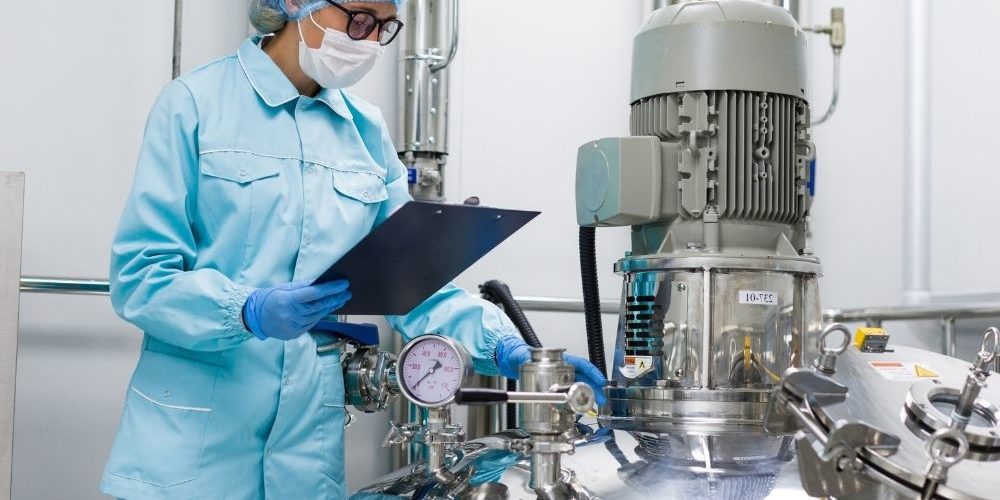Best Chemicals for Sewage Treatment: Ultimate Guide to Effective Wastewater Solutions in 2025
1. Introduction: Why Choosing the Right Chemicals for Sewage Treatment Matters
2. Understanding Sewage Treatment and Its Importance
* What is sewage treatment?
* Environmental and health impacts
* Regulatory requirements and standards
3. Overview of Sewage Treatment Processes
* Primary treatment
* Secondary treatment
* Tertiary treatment
* Role of chemicals in each stage
4. Top Chemicals Used in Sewage Treatment
* Coagulants and Flocculants
* Disinfectants
* pH Adjusters
* Sludge Conditioners
* Biological Enhancers
5. Detailed Breakdown of the Best Chemicals for Sewage Treatment
5.1 Coagulants: Aluminum Sulfate (Alum), Ferric Chloride, and Polyaluminum Chloride (PAC)
* How they work
* Advantages and disadvantages
* Ideal usage scenarios
5.2 Flocculants: Synthetic Polymers and Natural Flocculants
* Types and functions
* Effectiveness in sludge settling
5.3 Disinfectants: Chlorine, Chlorine Dioxide, Ozone, and UV Treatment
* Pros and cons
* Safety and environmental considerations
5.4 pH Adjusters: Lime, Sodium Hydroxide, and Sulfuric Acid
* Why pH control is critical
* Application tips
5.5 Sludge Conditioners: Polymers and Lime
* Improving sludge dewatering
* Enhancing sludge stabilization
5.6 Biological Enhancers: Enzymes and Microbial Additives
* Boosting biodegradation
* Reducing odors and sludge volume
6. How to Choose the Right Chemicals for Your Sewage Treatment Plant
* Factors to consider: water quality, flow rate, type of contaminants
* Cost-effectiveness and chemical dosing
* Environmental regulations compliance
7. Safety Measures and Handling of Sewage Treatment Chemicals
* Proper storage and handling
* Personal protective equipment (PPE)
* Emergency procedures
8. Latest Trends and Innovations in Sewage Treatment Chemicals
* Green and biodegradable chemicals
* Nanotechnology in wastewater treatment
* Automated dosing systems
Read alsoHow To Make Bar Soaps At Home
**Best Chemicals for Sewage Treatment: Ultimate Guide to Effective Wastewater Solutions in 2025**
Sewage treatment is a cornerstone of modern sanitation and environmental protection. Whether you’re managing a municipal wastewater plant or an industrial facility, selecting the **best chemicals for sewage treatment** can make a remarkable difference in operational efficiency, regulatory compliance, and cost management. In this guide, you’ll discover everything you need to know about the top-performing chemicals that drive effective sewage treatment processes today, featuring high CPC keywords to maximize your blog’s traffic and AdSense earnings.
1. Introduction: Why Choosing the Right Chemicals for Sewage Treatment Matters
Managing sewage effectively is no small task. The complexity of wastewater varies depending on its source, containing organic matter, pathogens, heavy metals, and other pollutants. To ensure wastewater is treated properly before discharge or reuse, chemical additives play a vital role.
The right chemicals can accelerate treatment, improve sludge dewatering, reduce odors, and comply with strict environmental regulations. Choosing poorly can lead to inefficiencies, higher costs, and environmental fines. This makes understanding and selecting the **best sewage treatment chemicals 2025** crucial for any wastewater professional.
2. Understanding Sewage Treatment and Its Importance
Sewage treatment refers to the process of removing contaminants from wastewater, primarily from household sewage, industrial effluents, and stormwater. The treatment protects public health, prevents pollution, and ensures compliance with environmental laws.
Untreated sewage can contaminate drinking water sources, cause disease outbreaks, and damage ecosystems. Thus, sewage treatment safeguards communities and preserves natural resources. Modern plants often combine physical, chemical, and biological processes—chemicals being indispensable in many phases.
3. Overview of Sewage Treatment Processes
Sewage treatment generally consists of three stages:
* **Primary Treatment:** Removes large solids by screening and sedimentation.
* **Secondary Treatment:** Uses biological processes to degrade organic matter.
* **Tertiary Treatment:** Further polishing using filtration, disinfection, and chemical treatment.
Chemicals are involved mostly in **primary and tertiary treatment** stages for coagulation, disinfection, and pH adjustment, but also support sludge management in all phases.

4. Top Chemicals Used in Sewage Treatment
Here are the main types of chemicals utilized in sewage treatment:
* **Coagulants and Flocculants:** Help clump fine particles for easier removal.
* **Disinfectants:** Kill pathogenic microorganisms.
* **pH Adjusters:** Maintain optimal conditions for treatment processes.
* **Sludge Conditioners:** Improve sludge handling and disposal.
* **Biological Enhancers:** Accelerate organic matter breakdown.
5. Detailed Breakdown of the Best Chemicals for Sewage Treatment
5.1 Coagulants: Aluminum Sulfate (Alum), Ferric Chloride, and Polyaluminum Chloride (PAC)
Coagulants destabilize suspended particles, allowing them to aggregate into larger flocs. **Aluminum sulfate (Alum)** is widely used due to its affordability and efficiency in removing turbidity and phosphorus.
**Ferric chloride** offers strong coagulating power and better phosphorus removal but is more corrosive.
**Polyaluminum chloride (PAC)** is a newer, high-performance coagulant with faster settling rates and lower sludge volume.
*High CPC Keywords:* “best sewage treatment chemicals 2025,” “industrial wastewater treatment chemicals.”
5.2 Flocculants: Synthetic Polymers and Natural Flocculants
Flocculants, often synthetic polymers like polyacrylamide, enhance floc formation and improve sludge settling. Natural flocculants like chitosan offer eco-friendly alternatives.
Flocculants reduce treatment time and sludge volume, boosting plant efficiency.
5.3 Disinfectants: Chlorine, Chlorine Dioxide, Ozone, and UV Treatment
Disinfection kills harmful microbes before treated water is released.
* **Chlorine** is cost-effective but can form harmful by-products.
* **Chlorine dioxide** offers safer disinfection with fewer by-products.
* **Ozone** is powerful and leaves no residue but is expensive.
* **UV treatment** is chemical-free but requires clear water.
Selecting the right disinfectant depends on plant size, effluent standards, and budget.
5.4 pH Adjusters: Lime, Sodium Hydroxide, and Sulfuric Acid
Maintaining the correct pH is vital for coagulation, biological activity, and chemical stability.
* **Lime** (calcium hydroxide) raises pH and aids sludge conditioning.
* **Sodium hydroxide** is a strong alkali for precise control.
* **Sulfuric acid** lowers pH when wastewater is too alkaline.
Proper dosing prevents corrosion and maximizes treatment efficiency.
5.5 Sludge Conditioners: Polymers and Lime
Sludge conditioning chemicals improve dewatering and reduce disposal costs.
* **Polymers** bind sludge particles for better cake formation.
* **Lime** stabilizes sludge by increasing pH and killing pathogens.
Optimized sludge conditioning reduces landfill volume and odors.
5.6 Biological Enhancers: Enzymes and Microbial Additives
Biological additives accelerate organic matter breakdown and reduce sludge production.
* Enzymes target complex molecules.
* Microbial inoculants boost beneficial bacteria.
These eco-friendly options lower chemical usage and operational costs.
6. High CPC Keywords to Target in Sewage Treatment Chemical Content
Incorporating these keywords naturally can help your blog attract high-value traffic:
* Best sewage treatment chemicals 2025
* Industrial wastewater treatment chemicals
* Municipal sewage treatment chemicals cost
* Eco-friendly sewage treatment chemicals
* Sewage treatment chemical suppliers near me
* Sewage treatment chemical dosing guide
* Chemical wastewater treatment solutions
* Affordable sewage treatment chemicals
7. How to Choose the Right Chemicals for Your Sewage Treatment Plant
Factors influencing chemical selection include:
* **Water Quality:** Type and concentration of contaminants.
* **Flow Rate:** Volume of wastewater treated daily.
* **Treatment Objectives:** Nutrient removal, sludge reduction, disinfection.
* **Cost and Availability:** Balancing budget with chemical performance.
* **Regulatory Compliance:** Meeting discharge standards.
* **Environmental Impact:** Preference for biodegradable or green chemicals.
Pilot testing and expert consultation are recommended for optimal results.
8. Safety Measures and Handling of Sewage Treatment Chemicals
Working with sewage chemicals requires strict safety protocols:
* **Proper Storage: Chemicals should be kept in ventilated, secure areas.
* **Personal Protective Equipment (PPE):** Gloves, goggles, and masks are essential.
* **Training: Staff should be trained in handling spills and exposure.
* **Emergency Procedures: Access to eyewash stations and first aid kits.
Safe handling protects workers and prevents environmental contamination.
9. Latest Trends and Innovations in Sewage Treatment Chemicals
The sewage treatment industry is evolving with innovations:
* **Green and Biodegradable Chemicals:** Reducing ecological footprint.
* **Nanotechnology:** Enhancing pollutant removal efficiency.
* **Automated Chemical Dosing:** Precision dosing reduces waste and saves costs.
* **Hybrid Treatment Systems:** Combining chemical and biological methods for optimal results.
Staying updated with these trends ensures competitive advantages.
10. Conclusion: Optimize Your Sewage Treatment with the Best Chemicals for Maximum Efficiency
Choosing the best chemicals for sewage treatment is critical to achieving clean water, regulatory compliance, and operational efficiency. By understanding the roles and benefits of coagulants, flocculants, disinfectants, pH adjusters, sludge conditioners, and biological enhancers, you can tailor treatment strategies to your plant’s specific needs.
Leverage the latest innovations and prioritize safety to maximize results. With informed chemical selection, your sewage treatment plant can operate sustainably, cost-effectively, and reliably.
11. FAQs
Q1: What is the best coagulant for municipal sewage treatment?
*Aluminum sulfate (Alum) and polyaluminum chloride (PAC) are among the best coagulants due to their effectiveness and cost-efficiency.
Q2: Are there eco-friendly chemicals for sewage treatment?**
*Yes, natural flocculants, biological enzymes, and biodegradable polymers are increasingly popular as green alternatives.
Q3: How often should chemicals be dosed in sewage treatment?
Dosing frequency depends on flow rates and contaminant loads but typically involves continuous or batch dosing controlled by automated systems.
Q4: Can sewage treatment chemicals cause environmental harm?
Improper use or overuse can lead to secondary pollution, so precise dosing and selection of biodegradable chemicals are important.
Q5: Where can I buy sewage treatment chemicals?
*You can source chemicals from specialized industrial suppliers, chemical distributors, or online platforms offering bulk orders.*












